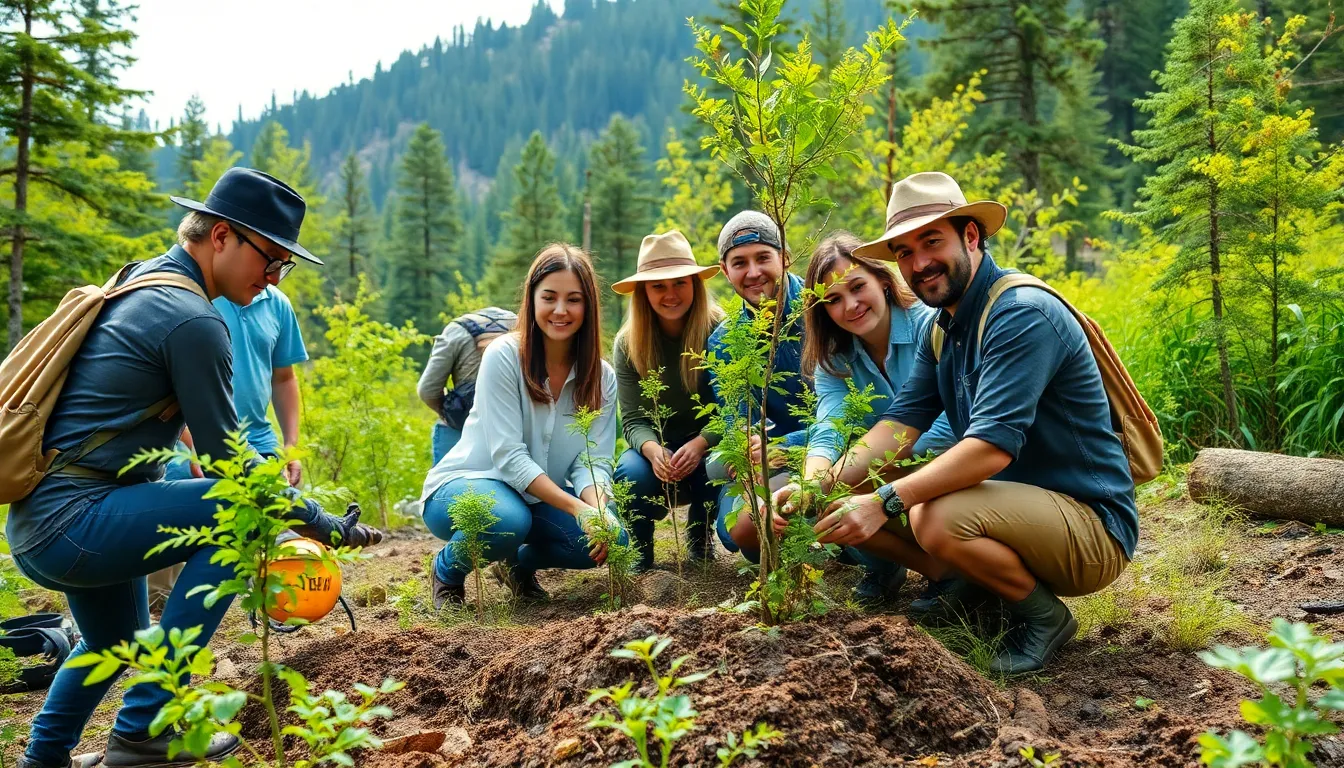In a world where humans have a knack for turning lush forests into parking lots, biodiversity protection has become the superhero we didn’t know we needed. Imagine a planet where every creature, from the tiniest ant to the majestic blue whale, plays a role in maintaining the delicate balance of life. It’s not just about saving the cute animals; it’s about ensuring our own survival too.
Biodiversity isn’t just a fancy word thrown around at dinner parties; it’s the backbone of our ecosystems. When nature thrives, we all thrive. So, let’s dive into the wild world of biodiversity protection and discover why saving the planet’s variety of life is the ultimate team effort. After all, who wouldn’t want to be on the winning side of this epic battle against extinction?
Table of Contents
ToggleUnderstanding Biodiversity Protection
Biodiversity protection remains crucial for maintaining healthy ecosystems. It involves conserving various life forms and their habitats to sustain ecological balance.
Importance of Biodiversity
Biodiversity contributes significantly to ecosystem services. Pollination of crops relies on diverse insect populations, while clean water depends on intact ecosystems. Various species ensure stability within food webs, impacting human food sources and nutrition. Genetic diversity within species promotes resilience against disease and environmental changes. Beyond ecological benefits, biodiversity supports economic activities such as agriculture, tourism, and pharmaceuticals. Preserving a wide range of life forms enhances human well-being and enriches cultural experiences.
Threats to Biodiversity
Multiple threats challenge biodiversity across the globe. Habitat destruction from urban development and agriculture results in habitat loss. Pollution from industrial waste and chemicals degrades natural environments, affecting plant and animal health. Climate change alters ecosystems, leading to shifts in species distributions and extinction risks. Invasive species often disrupt local ecosystems, outcompeting native species for resources. Overexploitation, including unsustainable fishing and hunting, threatens species survival. A combination of these factors results in declining biodiversity, emphasizing the urgency for effective conservation strategies.
Strategies for Biodiversity Protection

Biodiversity protection relies on diverse strategies that address the complex interactions within ecosystems. These approaches encompass conservation efforts and sustainable practices.
Conservation Efforts
Conservation efforts focus on protecting and restoring ecosystems. Protected areas such as national parks and wildlife reserves play a significant role by providing safe habitats for various species. Restoration projects aim to rehabilitate degraded habitats, enhancing their ability to support wildlife. Community engagement becomes crucial; local populations often participate in conservation activities, fostering a sense of stewardship. Organizations frequently collaborate to strengthen conservation initiatives, pooling resources and expertise for greater impact.
Sustainable Practices
Sustainable practices encourage the responsible use of natural resources. Implementing sustainable agriculture helps maintain soil health while minimizing chemical use, benefiting both crops and surrounding ecosystems. Eco-friendly practices in tourism promote awareness of biodiversity while supporting local economies. Businesses adopting sustainable models reduce their environmental footprint and protect habitats. Waste management strategies, including recycling and reducing plastic consumption, contribute to lower pollution levels and healthier ecosystems. Investing in renewable energy sources decreases reliance on fossil fuels, aiding in the fight against climate change, which threatens biodiversity.
Role of Policies in Biodiversity Protection
Policies play a crucial part in biodiversity protection through establishing frameworks for conservation efforts. Effective policy implementation fosters collaboration among governments, organizations, and communities.
International Agreements
International agreements significantly influence biodiversity efforts. The Convention on Biological Diversity, adopted in 1992, emphasizes the importance of biodiversity and requires signatories to develop national strategies. Monitoring progress towards global biodiversity targets is another role of these agreements. The Paris Agreement also touches on how climate change impacts biodiversity, urging nations to consider ecological consequences. Stronger international relationships can lead to better resource allocation for conservation projects.
Local Regulations
Local regulations directly affect biodiversity protection within communities. Zoning laws often establish protected areas that limit development and preserve habitats. Implementing regulations on resource extraction can prevent overexploitation of wildlife and natural resources. Specific initiatives, such as banning single-use plastics, reduce pollution and enhance ecosystem health. Engaging local stakeholders in drafting regulations fosters a sense of ownership and responsibility toward local biodiversity conservation efforts.
Community Involvement in Biodiversity Protection
Community involvement significantly shapes biodiversity protection efforts. Engaging local populations enhances awareness and fosters proactive participation in conservation initiatives.
Awareness Campaigns
Awareness campaigns educate communities about biodiversity’s vital role. They utilize various mediums, including social media, workshops, and local events, to spread crucial information. Effective messaging highlights the consequences of declining biodiversity. Campaigns often feature real-life examples of local species under threat and success stories from conservation efforts. Educational programs in schools encourage younger generations to value and protect their natural surroundings. Collective action based on these campaigns leads to stronger support for biodiversity initiatives.
Participation in Conservation Projects
Participation in conservation projects brings communities together. Volunteering opportunities allow individuals to engage directly with local ecosystems. Residents partake in activities like habitat restoration, tree planting, and species monitoring. Local organizations often coordinate these projects, inspiring communal responsibility and ownership of biodiversity protection. Engaging in these actions boosts ecological stewardship and strengthens social ties among community members. Successful projects demonstrate tangible benefits, such as improved local wildlife populations and enhanced ecosystem health. When communities actively participate, they create sustainable solutions for protecting biodiversity.
Biodiversity protection is a shared responsibility that requires immediate action. By prioritizing the preservation of diverse life forms and ecosystems, society can ensure a healthier planet for future generations. Engaging local communities and implementing effective policies are crucial steps toward sustainable practices that benefit both nature and humanity.
Through collective efforts in conservation and awareness, individuals can contribute to meaningful change. The fight against biodiversity loss is not just an environmental issue; it’s a fundamental aspect of ensuring human well-being and economic stability. Embracing biodiversity protection today will pave the way for a thriving and resilient world tomorrow.




